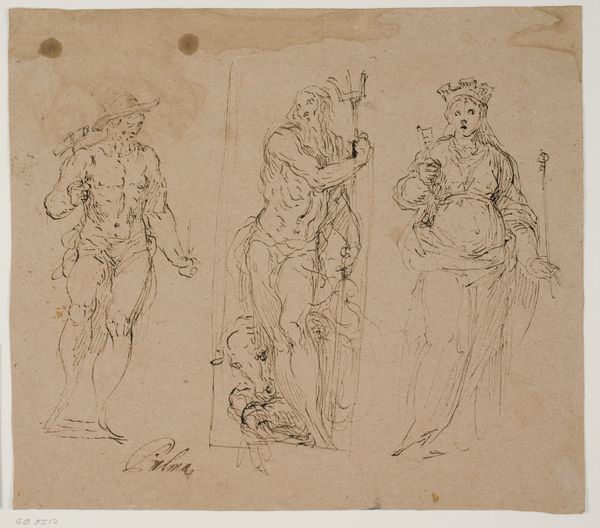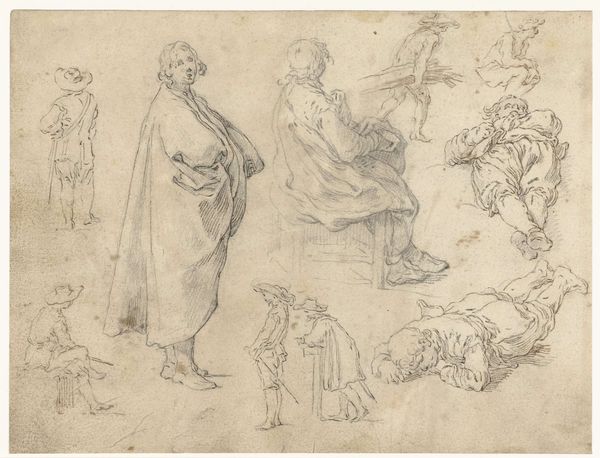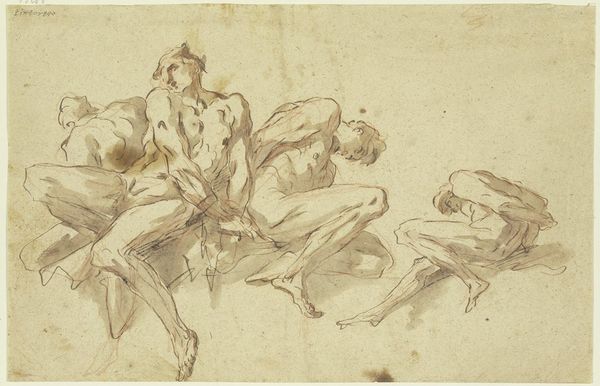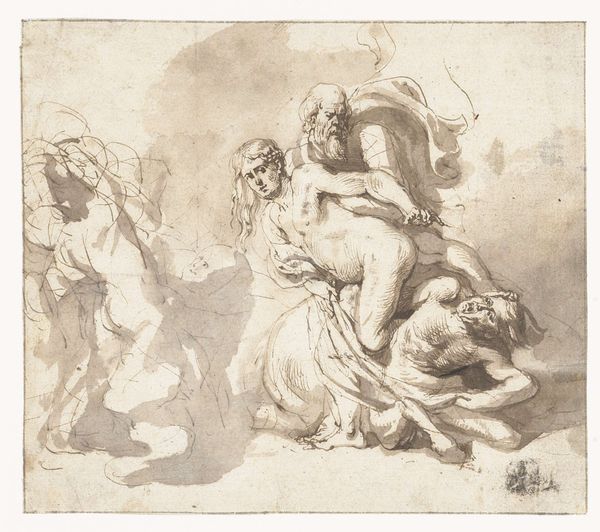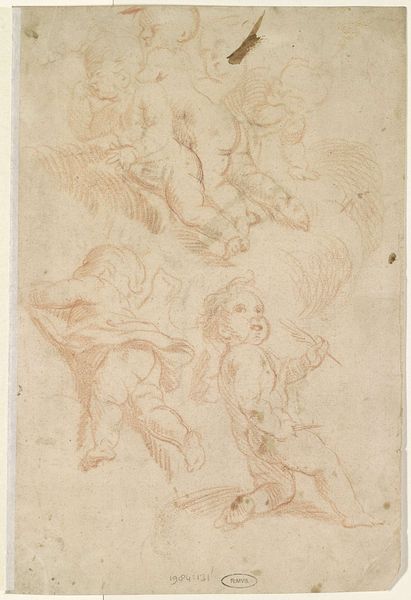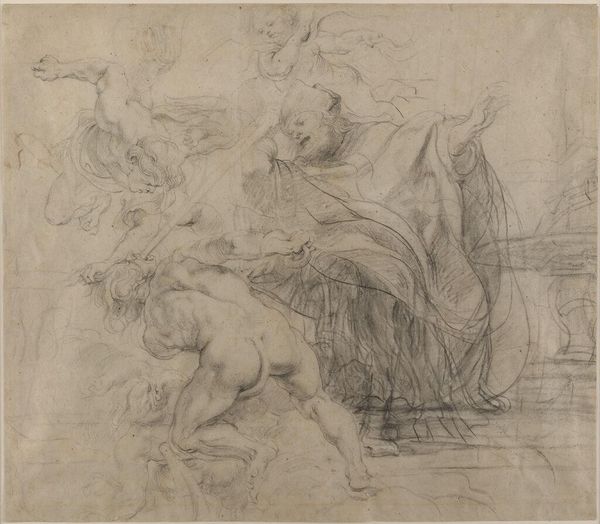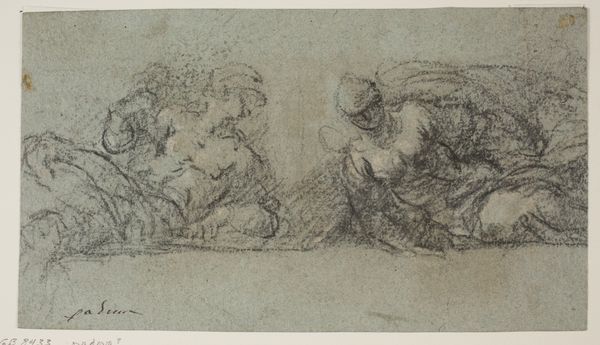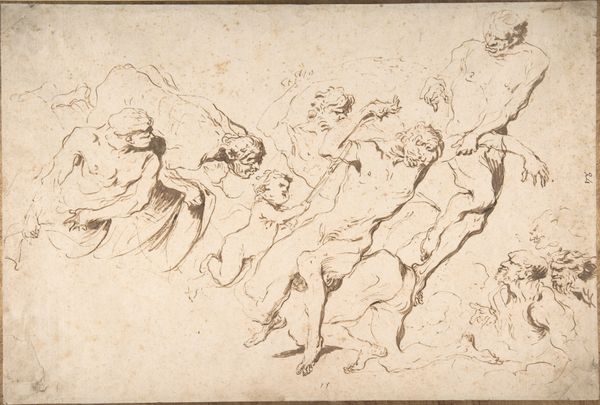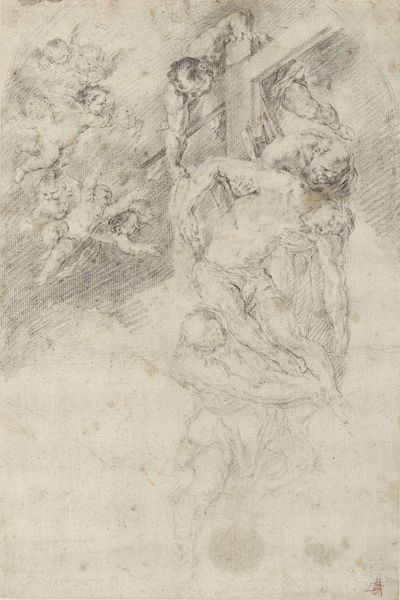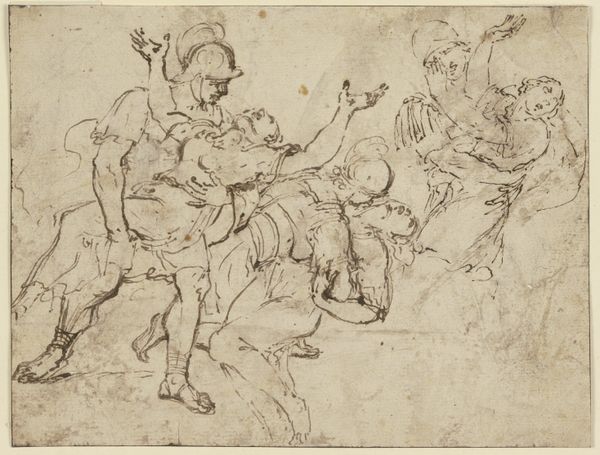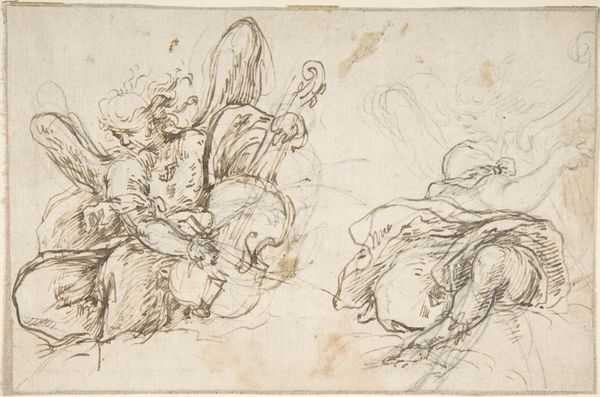![Figures Deciphering an Inscription, with Two Women Seated [Study for Oeuvres de Bossuet, IV] by Giovanni Battista Piazzetta](/_next/image?url=https%3A%2F%2Fd2w8kbdekdi1gv.cloudfront.net%2FeyJidWNrZXQiOiAiYXJ0ZXJhLWltYWdlcy1idWNrZXQiLCAia2V5IjogImFydHdvcmtzLzcxZTQ5NmRkLTNmMGEtNGY1NC1hYjc0LThhYWY0ZmUwZmJjYS83MWU0OTZkZC0zZjBhLTRmNTQtYWI3NC04YWFmNGZlMGZiY2FfZnVsbC5qcGciLCAiZWRpdHMiOiB7InJlc2l6ZSI6IHsid2lkdGgiOiAxOTIwLCAiaGVpZ2h0IjogMTkyMCwgImZpdCI6ICJpbnNpZGUifX19&w=1920&q=75)
Figures Deciphering an Inscription, with Two Women Seated [Study for Oeuvres de Bossuet, IV] c. 1736
0:00
0:00
drawing, paper, pencil
#
drawing
#
baroque
#
figuration
#
paper
#
pencil
#
genre-painting
Dimensions: sheet: 12.7 × 21.59 cm (5 × 8 1/2 in.) mount: 17.5 × 25.6 cm (6 7/8 × 10 1/16 in.)
Copyright: National Gallery of Art: CC0 1.0
Curator: This sketch by Giovanni Battista Piazzetta, created around 1736, is titled "Figures Deciphering an Inscription, with Two Women Seated." It’s a pencil drawing on paper. What strikes you about it? Editor: Well, I find it fascinating how Piazzetta captures these figures with such economical strokes. You can almost feel the concentration in their posture. What does it say about the society for whom Piazzetta was working? Curator: That’s a key point. Look at the materials themselves – pencil and paper. Relatively accessible, compared to say, oil paints and canvas. This suggests a preparatory stage, perhaps, but also consider the economics of artistic production. Who had access to art, and how was that art being consumed? Editor: So, the choice of materials hints at accessibility and process? But what about the subject matter - the act of deciphering? How does that fit in? Curator: Exactly! Think about literacy, education, the spread of knowledge. Deciphering an inscription wasn’t a solitary act. It was collaborative, social. It implies a learned society, even a form of intellectual labor. Were these figures of higher status due to their access of the content of inscriptions and writing? Editor: That makes me wonder about the role of women in the sketch. Are they active participants in deciphering, or are they positioned differently in relation to knowledge production? Curator: A crucial question! Observe their clothing and posture compared to the men. What does it communicate about gender roles and the access to intellectual activities within that specific time and place? Perhaps, as this was preparation for a series based on a noted clergyman's work, there's an attempt to include varied members of the clerical setting in the activities of theological production. Editor: I hadn’t considered the social dynamics embedded in the image like that. The materials, the composition, they all speak to the means and the meaning! I’ve really changed my view of the art as only visually and artistically rich. Curator: Precisely. The value lies not just in the aesthetic, but in understanding the historical and material circumstances of its making.
Comments
No comments
Be the first to comment and join the conversation on the ultimate creative platform.
